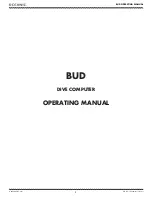
Concepts and Features
R&S
®
ZNC
72
User Manual 1173.9557.02 ─ 13
TOSM with unknown Through, UOSM
The network analyzer supports different connector types at its test ports in order to mea-
sure DUTs with different port connectors. To perform a TOSM calibration, the DUT must
be replaced by a Through connection, which generally involves an adapter between the
two connector types.
An adapter represents a Through standard with unknown characteristics (in particular,
with unknown delay time/transmission phase). The analyzer can perform a TOSM cali-
bration with an unknown Through, provided that it is reciprocal (S
21
= S
12
). The modified
TOSM calibration is referred to as UOSM (Unknown through – Open – Short – Match)
calibration. It can be selected as follows:
●
If different connector types are assigned to the test ports, the analyzer automatically
replaces TOSM –> UOSM.
●
If the same connector types are used but the appropriate through standard is not
defined, the analyzer also replaces TOSM –> UOSM.
●
UOSM can be selected explicitly in the "Calibration Presetting" dialog.
After acquiring the calibration sweep data for the unknown Through, the analyzer auto-
matically determines its delay time/transmission phase.
3.5.1.5
TOM Calibration
A TOM (Through – Open – Match) calibration requires a low-reflection, low-loss Through
standard with an electrical length that may be different from zero, an Open, and a Match.
The characteristics of all standards must be fully known; the Match may have non-ideal
characteristics.
3.5.1.6
TSM Calibration
A TSM (Through – Short – Match) calibration requires a low-reflection, low-loss Through
standard with an electrical length that may be different from zero, a Short, and a Match.
The characteristics of all standards must be fully known; the Match may have non-ideal
characteristics.
TSM calibration can replace TOM calibration if no appropriate "Open" standard is avail-
able, especially in the high frequency domain.
3.5.1.7
TRM Calibration
A TRM (Through – Reflect – Match) calibration requires a low-reflection, low-loss Through
standard with an electrical length that may be different from zero, a Reflect, and a Match.
The magnitude of the reflection coefficient of the Reflect standard can be unknown but
must be nonzero; its phase must be roughly known (90 deg). The magnitude and phase
of the reflection coefficient must be the same at both test ports.
TRM calibration is especially useful for DUTs in test fixtures.
Calibration
















































